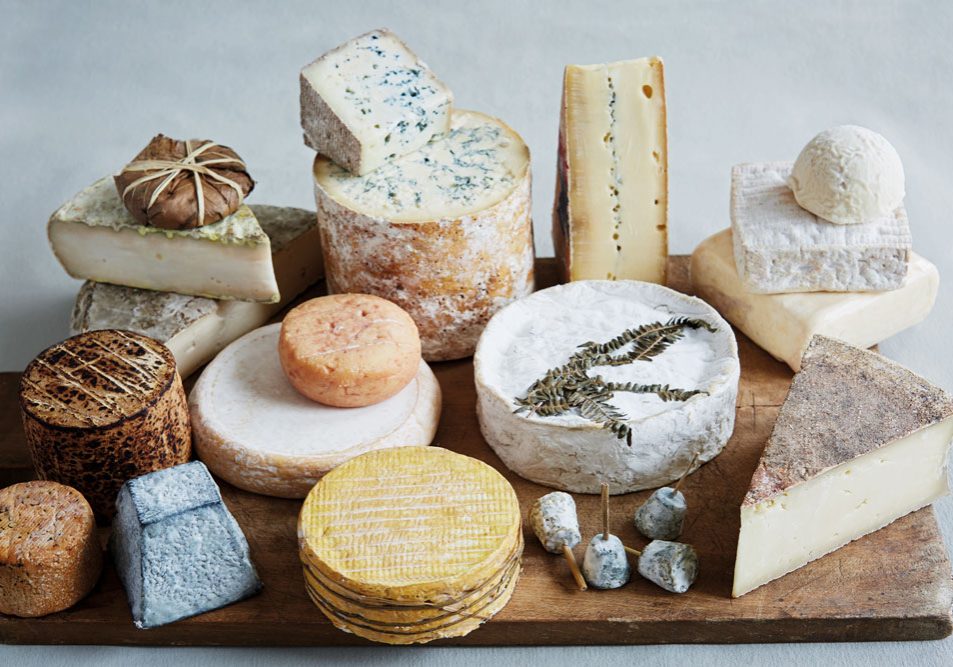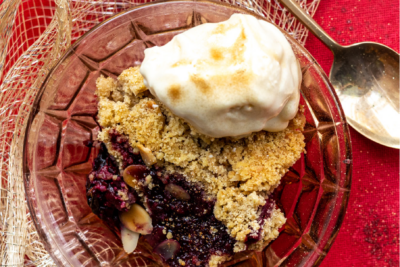
The Ultimate Cheese Board | Michel Roux
by Northern Life
If you are entertaining at home, your choice will be determined largely by the number of guests. For four people, my advice would be to serve just one generous wedge of perfectly ripe cheese such as Brie de Meaux or Stilton, or a lovely piece of Comté. I always like to serve an odd, rather than even, number of cheeses. For six to eight guests, I’d probably offer five cheeses. For ten to twelve guests I would suggest serving seven cheeses at most, to avoid the choice becoming confusing.
Select a variety of cheeses from each the following categories:
- A fresh or white cheese, from the Loire Valley, perhaps, where you can find a host of fresh goat’s cheeses between three and seven days old. There is also a wonderful little English goat’s cheese called Innes Button. This cheese will prepare your palate, much as in a wine tasting where you would start with a local wine before moving onto a premier cru, then a grand cru.
- A soft fresh cheese, with a natural rind such as a Saint-Pierre, Brocciu or Banon de Provence.
- A soft cheese with a bloomy rind, such as Sharpham Brie or Camembert.
- A soft cheese with a washed rind, such as Stinking Bishop, Vacherin Mont d’Or or Taleggio.
- A semi-firm hard cheese, such as Berkswell or Saint-Nectaire, or a hard cheese, such as Parmigiano Reggiano or Comté.
- A blue cheese, such as Gorgonzola, Stilton, Roquefort, Bleu des Causses or Fourme d’Ambert.
- A flavoured cheese, such as Cornish Yarg or Edam.
To appreciate their flavour to the full, cheeses should be served at room temperature. So, if
they are stored in the fridge, you will need to take them out an hour or so before serving.
“A cheese board should look appealing and have a sumptuous selection of cheeses, presented attractively”
A cheese board should look appealing and have a sumptuous selection of cheeses, presented attractively. The actual board could be a large piece of slate, a beautiful piece of wood or a marble slab. If you have a few vine leaves or chestnut leaves to hand, you could use these to line the surface decoratively.
Arrange some dried fruit (figs, apricots, dates, etc.), walnuts and hazelnuts around the cheeses.
On a separate dish, you could also offer a few little bunches of black or green grapes, some pears or apples, celery leaves, and a small dish of chutney. You can equally serve quince paste alongside, although it won’t necessarily go with every cheese, or a little honey, which would be a perfect accompaniment to Parmesan.
Don’t forget to provide several knives, to avoid using the same knife for all the cheeses. I also advise you to make a start on each cheese, as this will encourage your guests to dig in…
 Offer an assortment of different breads: walnut, raisin or fig bread or even a lovely pain de campagne would go beautifully with your cheese. Provide a selection of biscuits too: water biscuits, very lightly sweetened oat biscuits and rye crackers, perhaps.
Offer an assortment of different breads: walnut, raisin or fig bread or even a lovely pain de campagne would go beautifully with your cheese. Provide a selection of biscuits too: water biscuits, very lightly sweetened oat biscuits and rye crackers, perhaps.
As for selecting a suitable wine or other drink to accompany cheese, there are no hard and fast rules. Red or white wine, vin jaune, whisky, sherry, port, Sauternes, cider and beer are all possibilities. It depends on the cheeses you have chosen to serve, and on your personal taste.
Savouring a cheeseboard with an appropriate drink is a wonderful, relaxing way to end a meal, but if you are serving a dessert you may prefer to offer the cheese first, as a palate-cleanser before the sweet finale. This is the tradition in France but the choice is yours.





